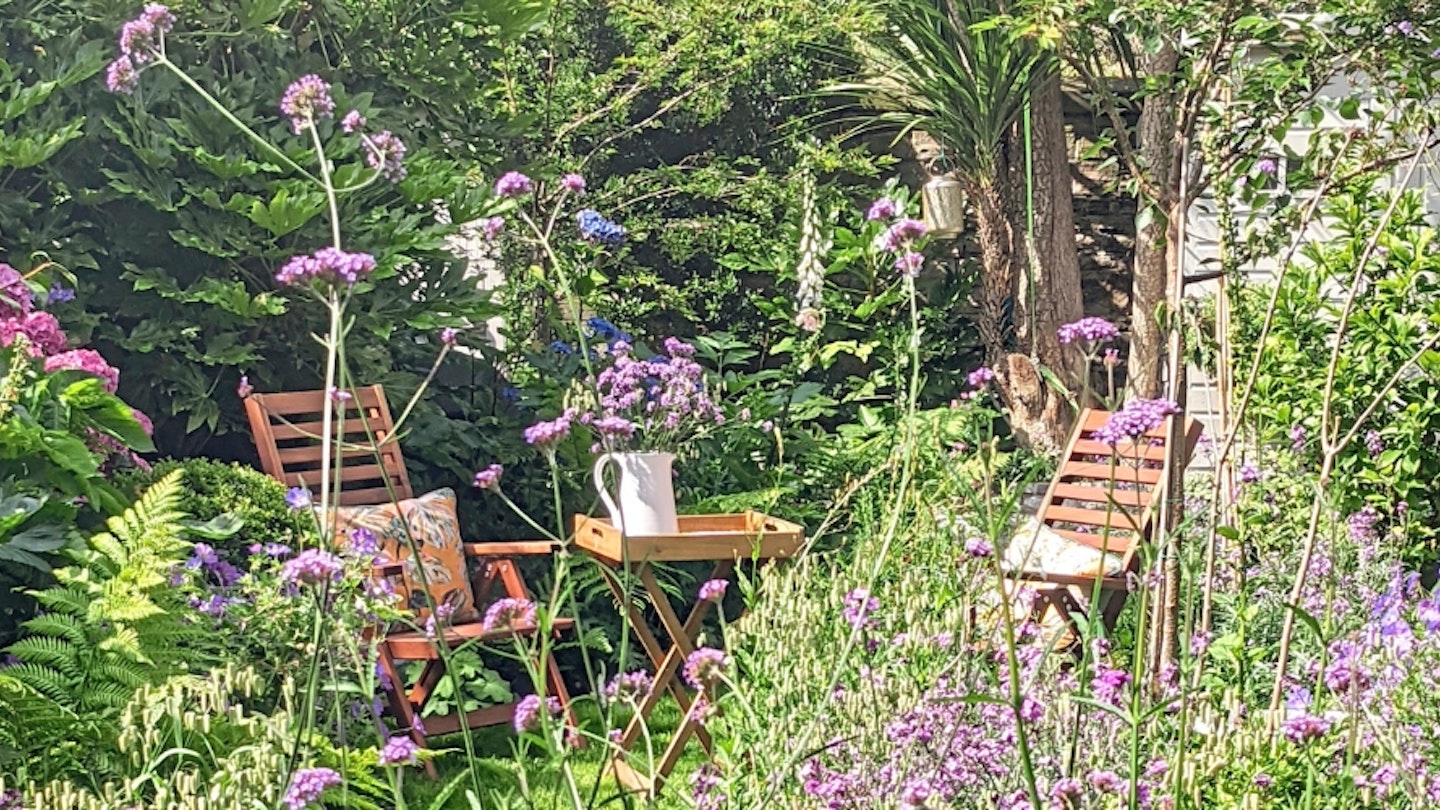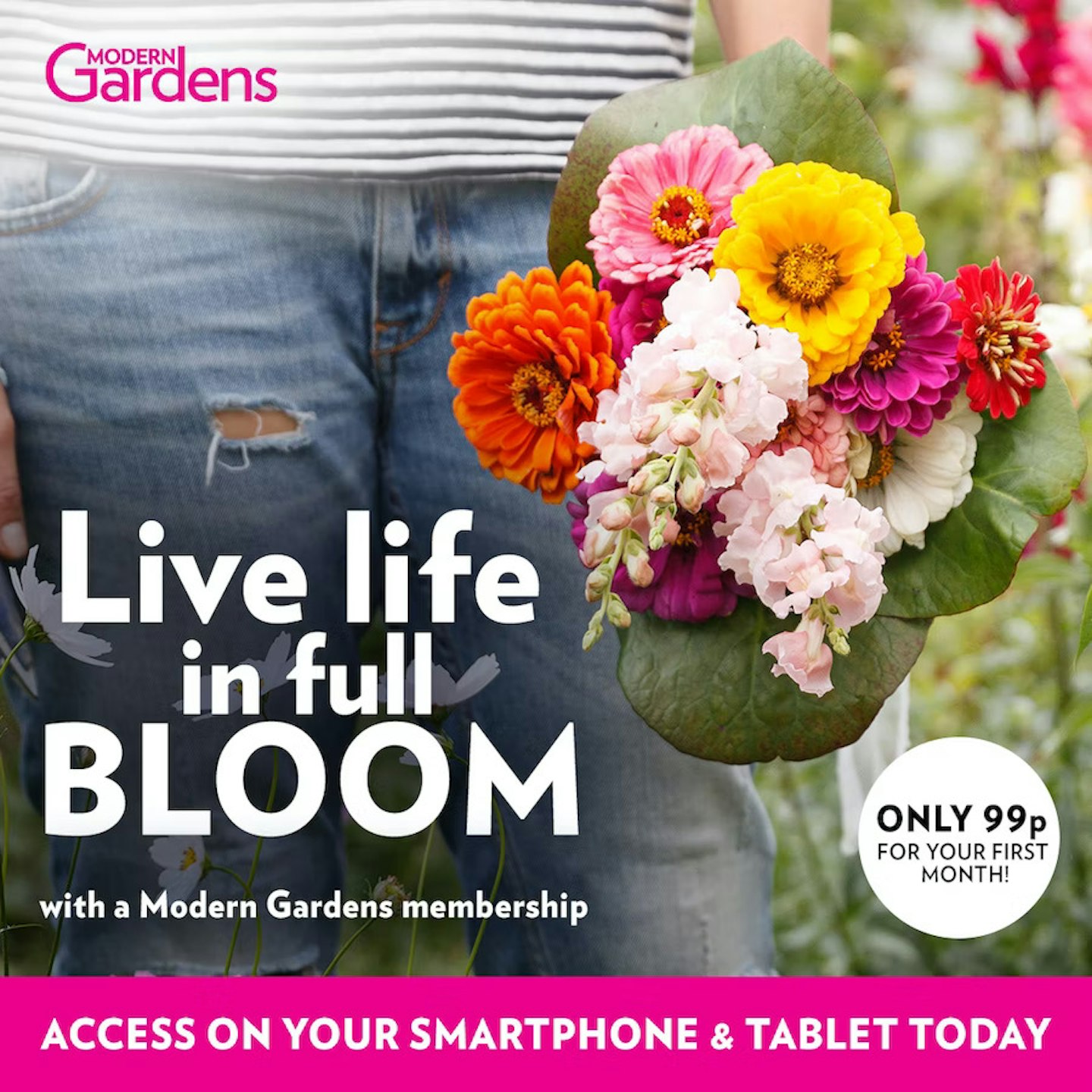Looking at Libby Webb’s botanical oasis with its rambling greenery, pollen-rich plants and rich biodiversity, it’s hard to believe that until recently the plot was a largely wildlife-free zone. In the heart of Edinburgh city centre, the Edwardian terrace backyard was originally used for nothing more than clothes drying and coal shuttling. Indeed, until Libby got her creative hands on it, it remained a bare urban space in which the sound of cars was more likely to be heard than birdsong. “The view when we moved in was of telegraph poles and houses, so I was determined to be able to look out and see greenery,” Libby explains. “I was mindful to attract birds and insects, and I knew that bringing in wildlife would be a boost for the family’s physical and mental health.”
My nature garden makeover plan
LOCATION Edinburgh
THE LOOK Cottage jungle
SITE Size 7m x 14m Faces West Soil Acidic
BUDGET Materials for laying free cobblestones £800; Pond liner & pond plants £77; Retaining wall bricks & mortar £240; Manure £120; Pots & planters £330; Plants, trees & bulbs £2,678; Water feature £400; Chairs £230; Lights £190; Birdbath & feeders £280; Insect house £27. Total: £5,372
HOW LONG IT TOOK Lifting lawn 2 weeks; Laying cobblestone path 2 weeks; Installing pond 9 days; Building retaining wall 2 weeks; Planting 2 weeks; Growing seeds 1 month. Total: 13 weeks over 18 months

Join Libby on her gardening journey on Instagram @docleaves
Creating a garden ecosystem
Before Libby’s garden became the entire ecosystem it is today, the busy healthcare worker bided her time with trial and error additions. With a young family and a husband who also worked long hours, she played the long game, occasionally widening borders and slowly adding evergreen plants. “Back then the garden wasn’t a priority, although I experimented with a bit of planting when I had time,” she says. “Then three years ago we got rid of the children’s old climbing frame and I knew it was my turn!”
Libby’s first phase in ‘project wildlife haven’ was a rethink of the lawn. And while it might sound counter-intuitive, she was firmly of the view that the area of grass needed to be drastically reduced, if not removed. “Lots of people stick with grass and overlook other options because it’s just ‘what you do’,” she explains. “In our small garden the lawn wasn’t serving a purpose, plus I knew the space could be better used to introduce tall trees as well as flower borders, plus a pond, which would attract other wildlife. I saw our lawn as a mower-energy-eating monoculture and knew I could replace it with a more diverse habitat.”
Path to pollinators
Also mindful of the visual impact of breaking up the empty rectangular 7m x 14m space, Libby wanted to create the illusion of travel by laying down a path. Luckily, a few years earlier a neighbour had donated unwanted cement cobble paving, which was otherwise destined for landfill. Libby wisely held onto it for a future project, and the time was finally right. “My husband Hamish and I used them to cobble two areas that were previously lawn,” she says. “We didn’t stick to any kind of design, but just visually adjusted when needed. We made it up as we went along, leaving just a small patch of grass.”
It might have been trial and error, but the strategy worked, resulting in a winding course that forces the eye to move, and creates interest. That new layout literally paved the way for the all-important trees, and Libby was in no doubt as to the variety. Winter cherry trees, with their ornamental petals that bloom repeatedly during mild winter spells were the perfect choice for year-round wildlife appeal. “They’re beautiful,” she says. “The three trees seem to merge together, making a gorgeous canopy of blossom for pollinators.”
Nectar-rich blooms
Attracting yet more bees are the mostly homegrown blooms that Libby tirelessly propagated in her kitchen. Verbena, cornflower and angelica were all grown from seed, although a degree of patience was required for other plants. Delphiniums and lupins, Libby discovered, were reluctant growers and she was finally forced to admit defeat. More successful were the varieties native to Scotland such as foxgloves. But there were a couple of calamities along the way! “The salvia and echinacea I grew were eaten within minutes after I planted them!” Libby winces. “I’ve been plagued by slugs, although I refuse to use chemical pesticides. Putting beer out for them, then picking them out, is one way to deal with them, although it’s not fail-safe.”
A sustainable solution to those pesky slugs was inviting frogs to set up residence. Water was high on Libby’s wishlist, but not the sort of ornamental pond favoured by many gardeners. She explains: “I wanted a safe, secluded shelter for wildlife that would be surrounded by plants and have the type of stagnant water that encourages breeding.”
Natural pest control
And so Libby bought a pre-fab pond kit online and set about concealing the plastic edges with forget-me-nots and creeping Jenny. A nearby log pile attracts creepy crawlies, and it’s fair to say Libby has pulled out all the stops to tempt other wildlife. “It might sound crazy but I fashioned a frog ladder out of a guinea pig tunnel from Pets at Home,” she smiles. “I also made a natural landing pad for insects out of two big branches I foraged from local woods. Some might accuse me of overthinking, but it worked! Just three months after the pond went in it became part of the garden’s ecosystem.”
Add to that, a ceramic bird bath, complete with rock stepping stones, bird feeders, an insect house, plus open flowers that were planted to attract pollinators, and it’s easy to see why Libby’s garden is now teeming with life.
Helping wildlife
When it comes to the more aesthetic factors, Libby is equally passionate. With clear ideas about colour palettes and planting styles, she is nothing if not deliberate. “In a small garden it’s best to stick to restricted colours, and I chose purple, white, blue and pink,” she says, “but they have to be pale washed-out shades. I prefer to vary the textures, rather than the colours, and I go for ethereal delicate flowers, nothing big and blousy. I’m also drawn to different garden styles like Scandi, Japanese and cottage. So my garden is an eclectic confusion of all that, although it seems to work!”
Libby’s time outdoors is mostly for maintenance, pottering and bird feeding, while al fresco meals and drinks are taken at the dining table with bifolds wide open, where the garden can be admired from indoors. She does, however, relish a solitary morning coffee while listening to the birds. “It can be slightly alarming how noisy they are,” she jokes. “It just shows how far we’ve come, from an empty, virtually non-existent wildlife space, to a biodiverse haven for birds, bees, frogs and other creatures.
“Everything’s evolving, and I’m constantly creating so I can feed the ecosystem and attract even more wildlife. Bringing in nature helps the environment and it also it boosts my mental and physical health. The two go hand in hand.”
How I did it
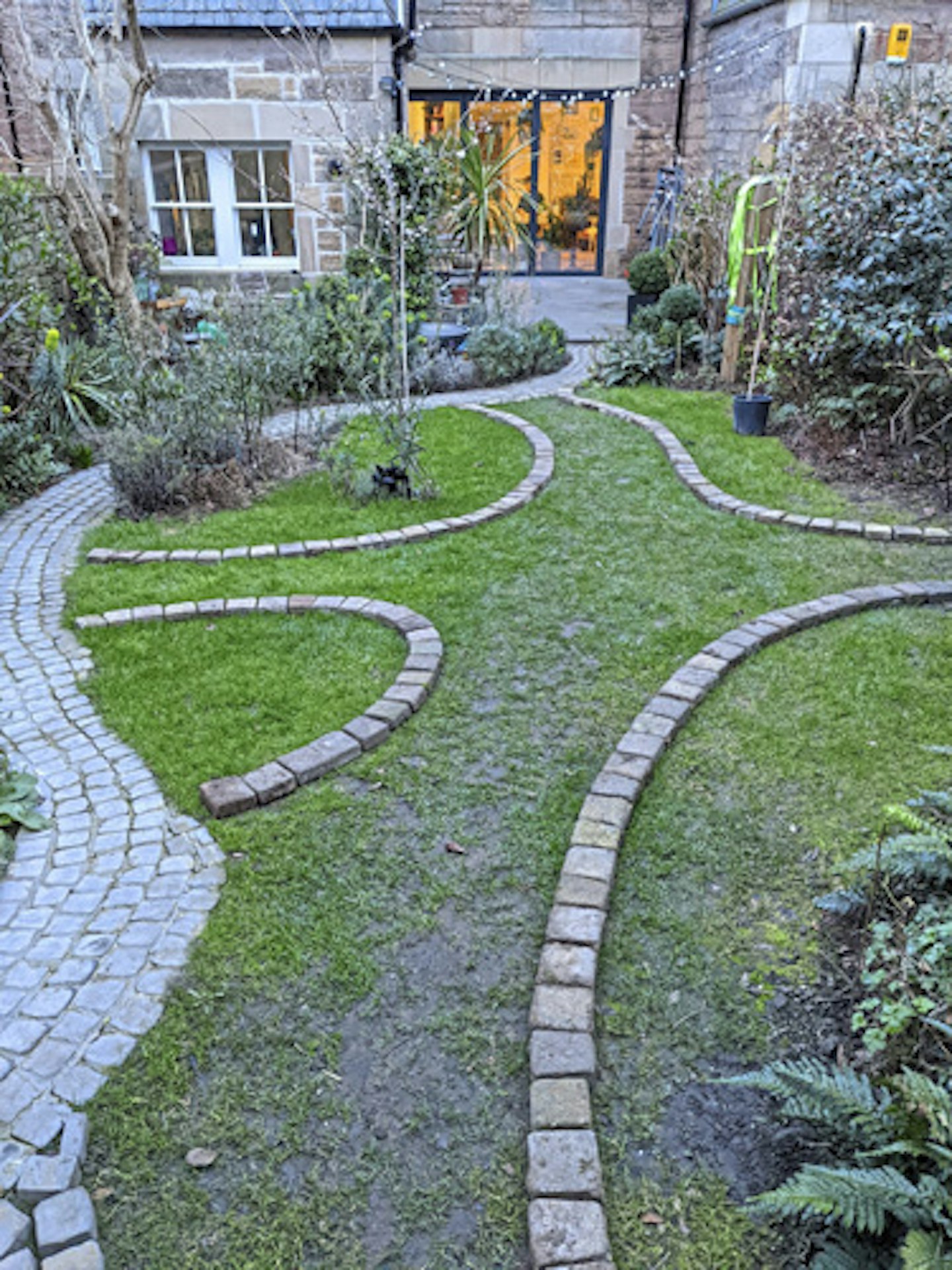
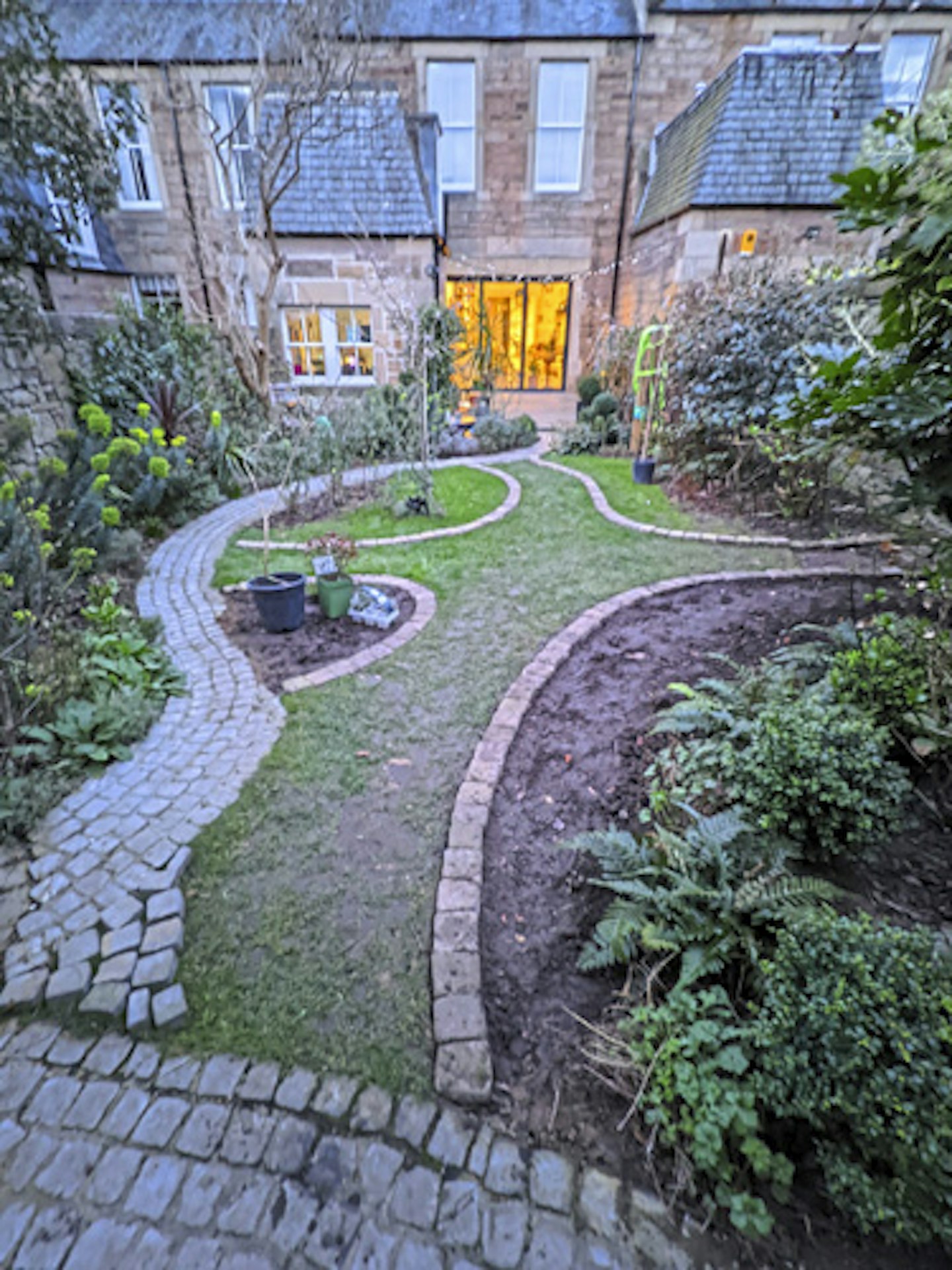
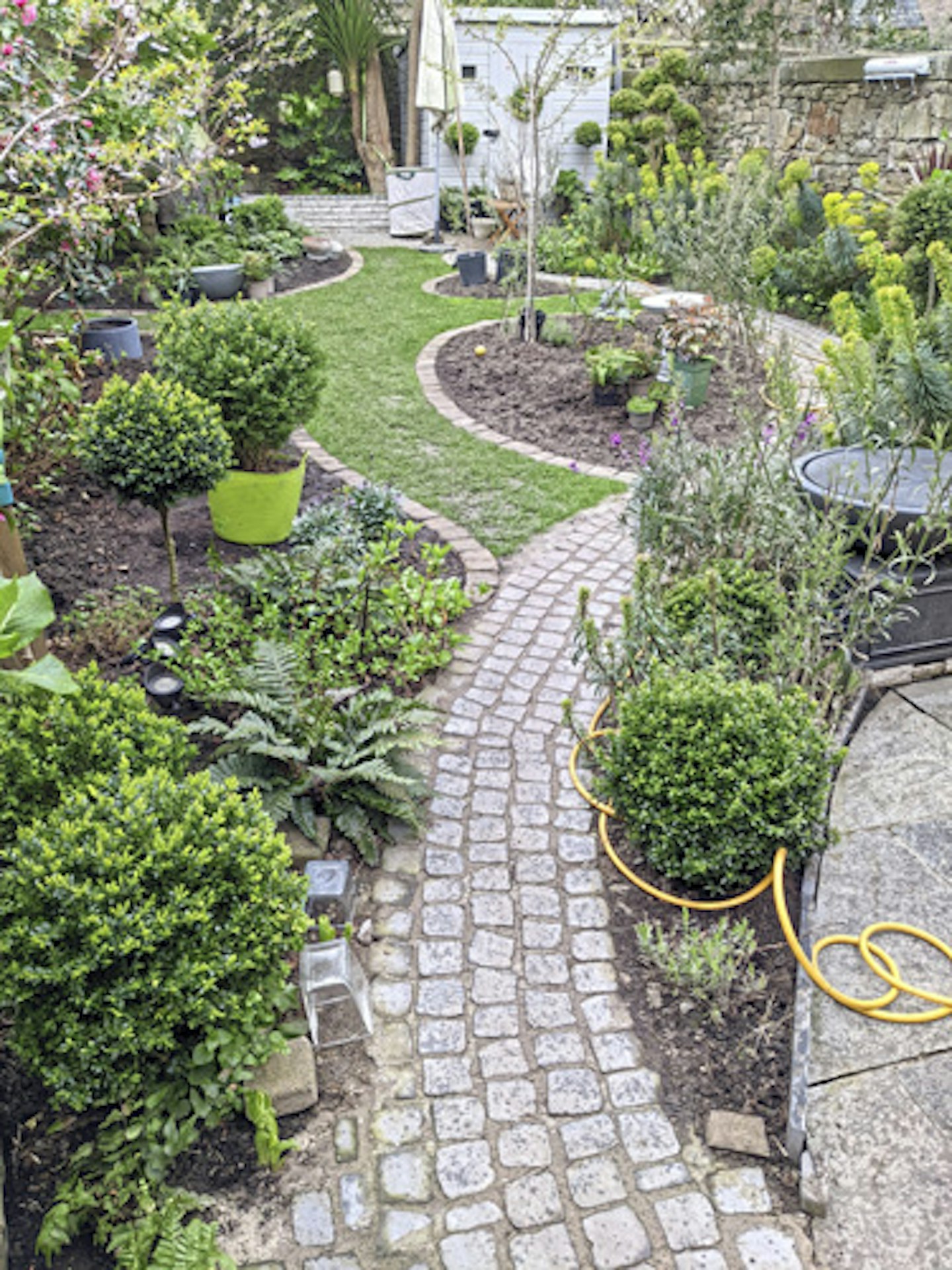
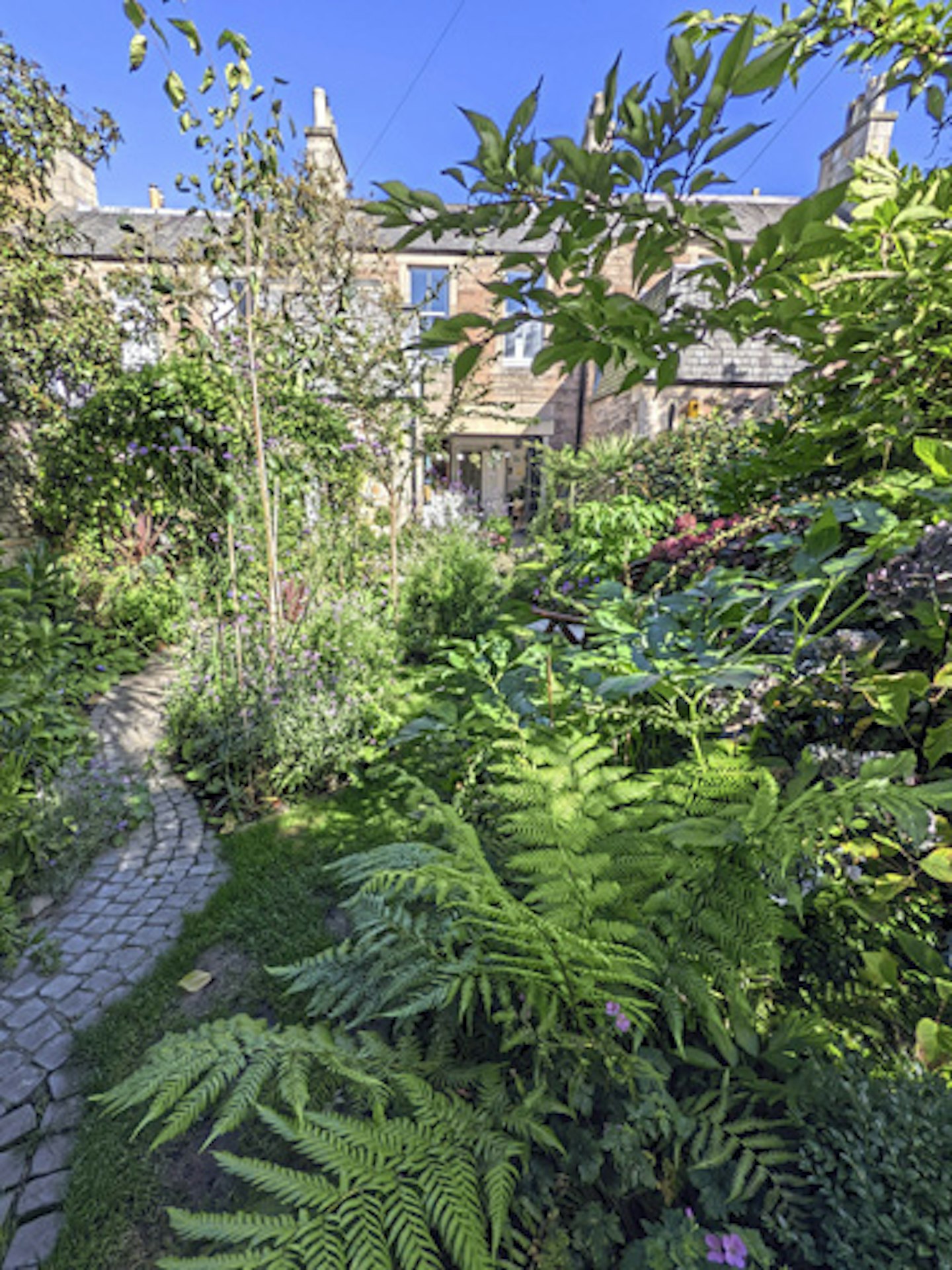
Libby's tips to make a home for wildlife
-
When it comes to feeding birds, do your research – rspb.org.uk is a wealth of information when it comes to the best kinds of feed to put out.
-
Open saucer-shaped flowers are easiest for bees to land on. Add plants that flower at different times of the year so there’s always something in bloom in your garden.
-
Opt for ceramic bird feeders as they’re easily washed and kept clean. And set yourself a reminder to regularly change the water in your bird bath – it’ll help to keep wildlife healthy and prevent disease.
-
If you spot pests, always wait to see if they’re naturally and sustainably controlled. When my fatsia was covered in blackflies I waited, and within days it was covered in ladybird eggs. Once they hatched, the ladybirds ate the blackflies and it was pest-free.
Smart ideas to steal
-
Swap some lawn for wide borders.
-
Plant a cherry tree for an early feast for pollinators.
-
Sink a pond into a border and surround with sheltering leaves.
Enchanting oasis
An abundance of blooms and all sorts of garden critters have brought this idyllic Scottish plot to life.
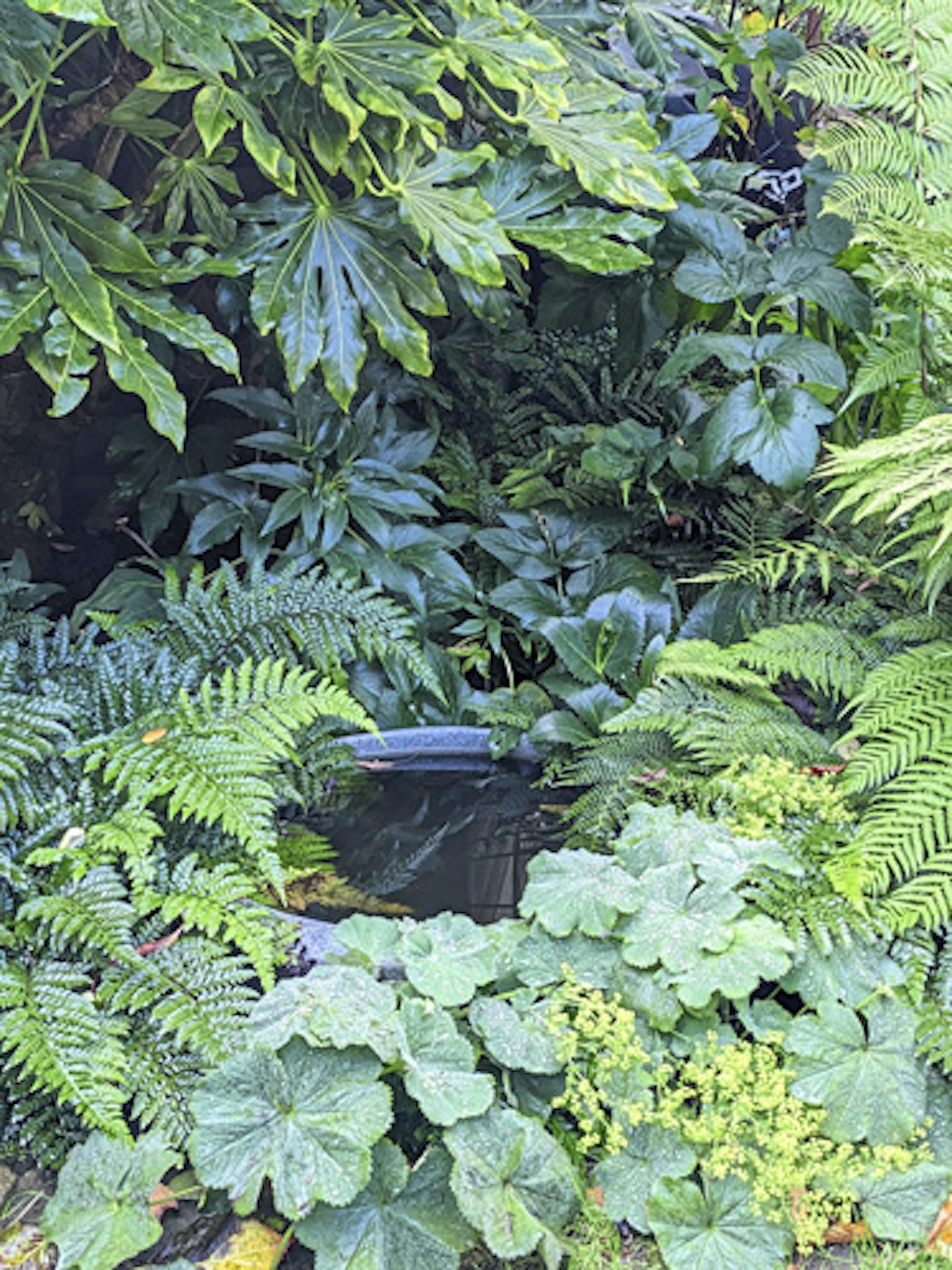 1 of 11
1 of 11Who needs sun? This shady corner shines with light-reflecting glossy evergreen leaves and a micropond.
 2 of 11
2 of 11Loved by bees, Persicaria bistorta stands tough against slugs!
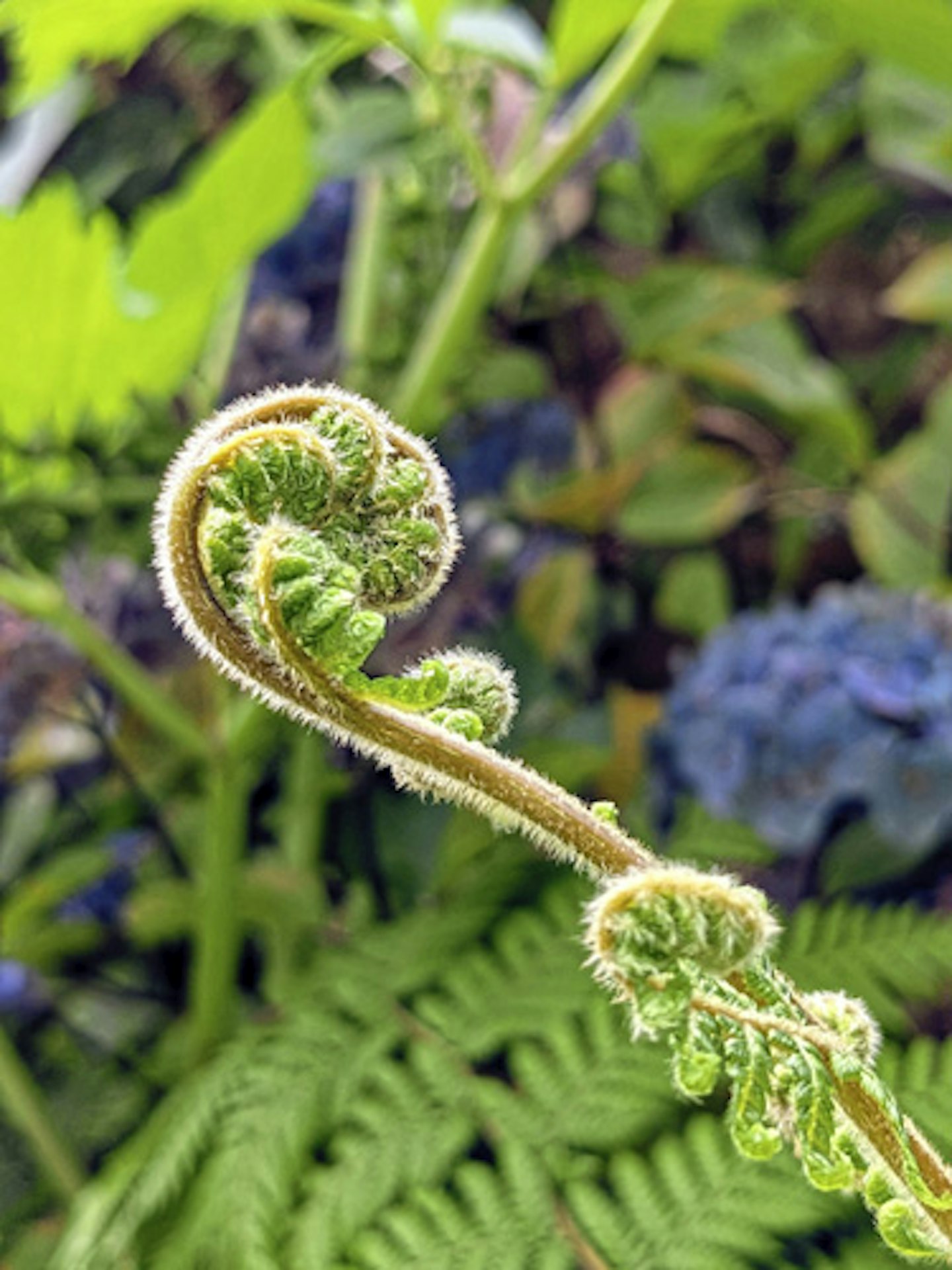 3 of 11
3 of 11New life unfurls around every corner with this tree fern frond being a fuzzy fave.
 4 of 11
4 of 11Lush leaves planted around the edges of the pond add shelter for wildlife.
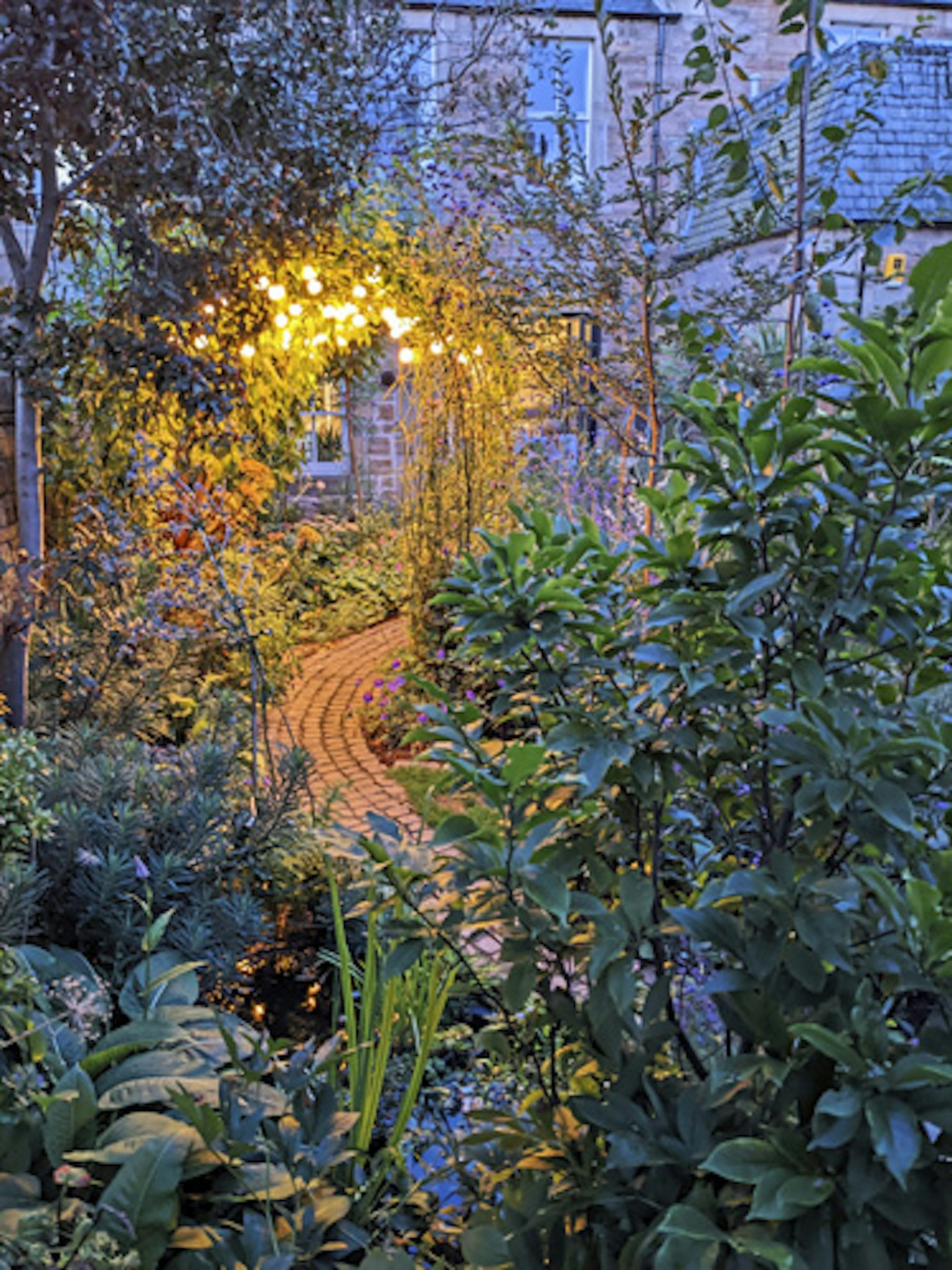 5 of 11
5 of 11An aromatic arch of Solanum crispum and jasmine is an eye-catching focal point day and night.
 6 of 11
6 of 11A whole new world for Crumble to explore.
 7 of 11
7 of 11Pollen-packed cosmos is easily grown from seed.
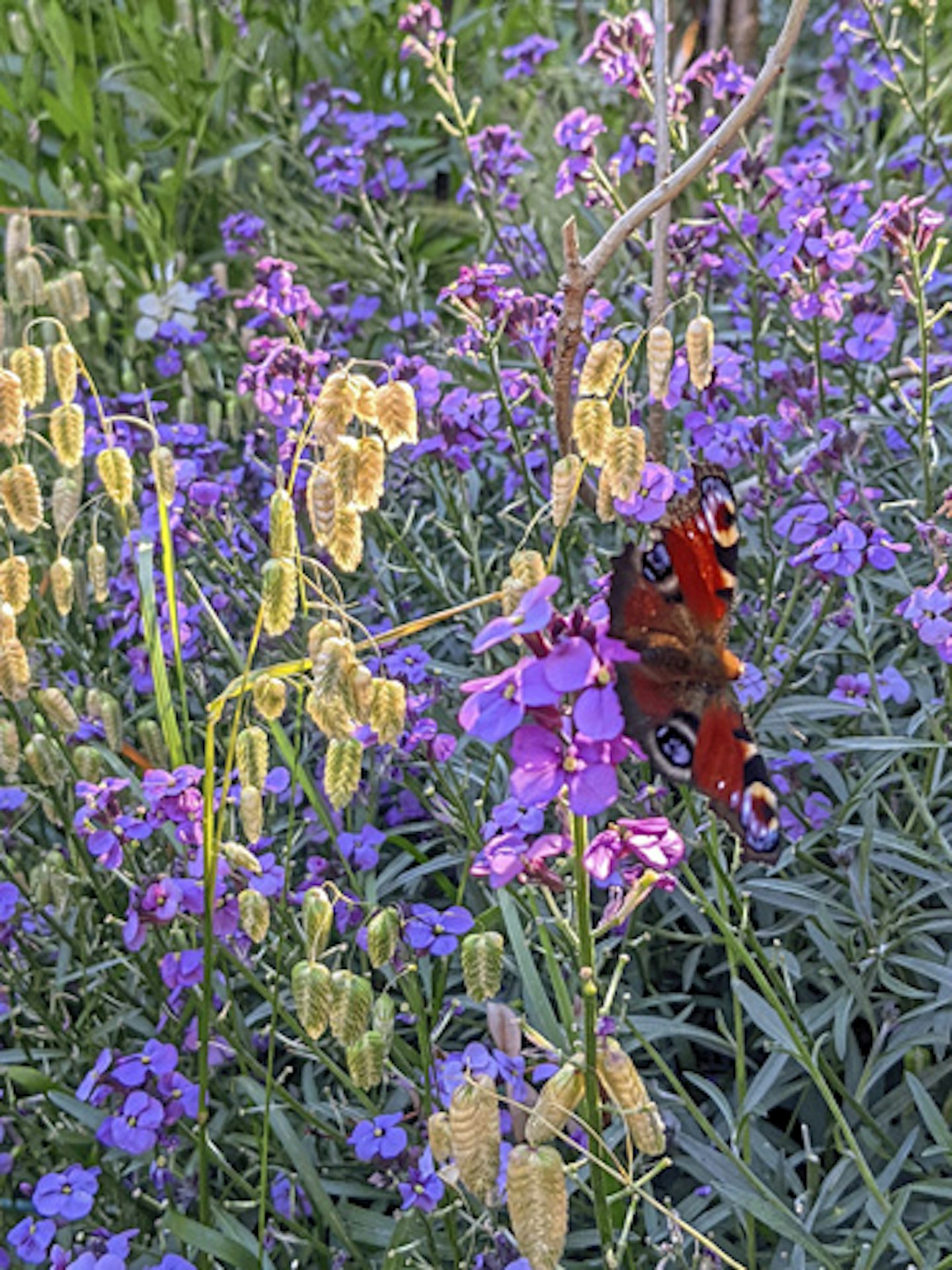 8 of 11
8 of 11Sweet-scented Erysimum ‘Bowles’s Mauve’ is butterfly heaven.
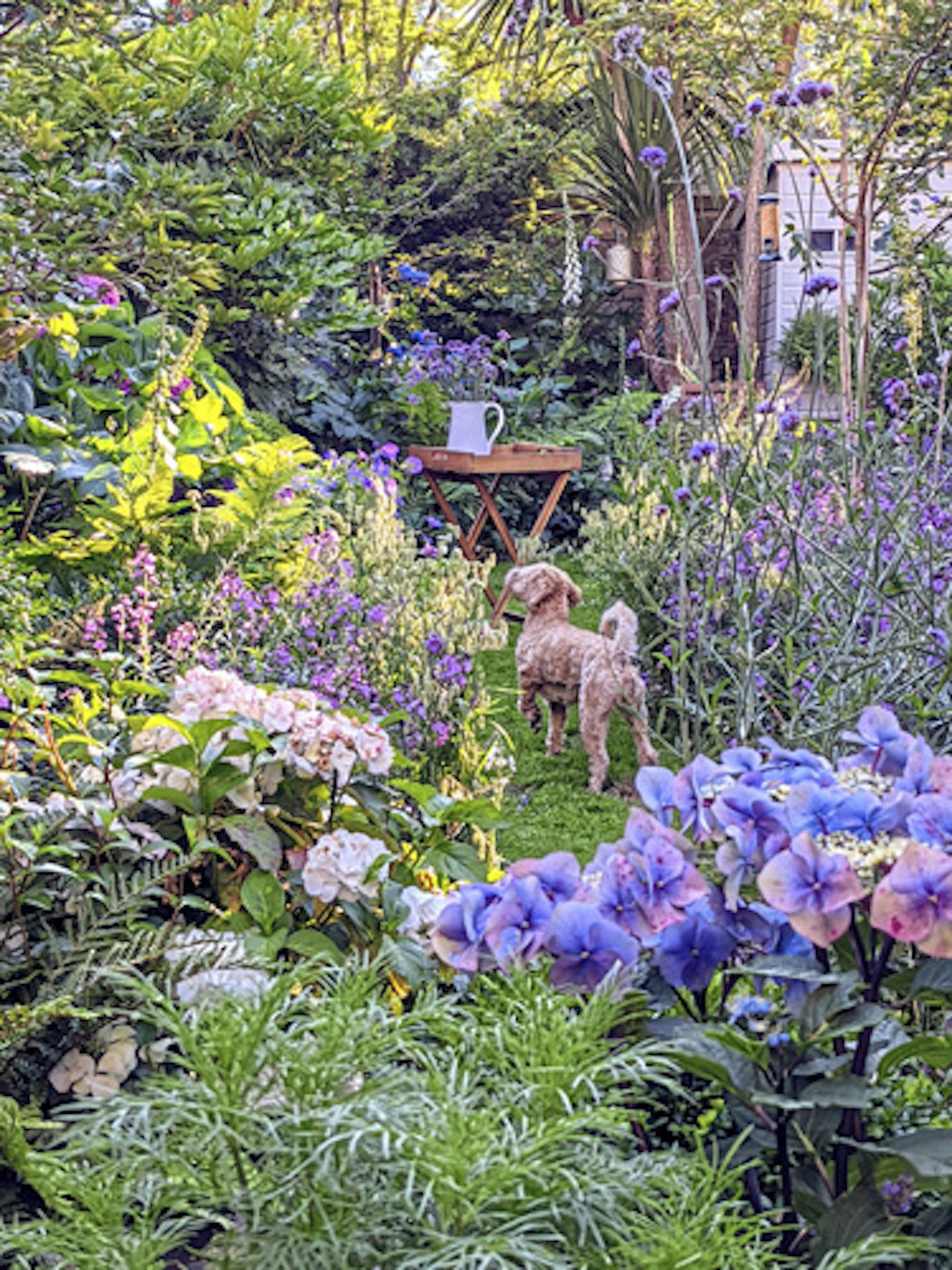 9 of 11
9 of 11Layers of texture and colour add a sense of depth and give a feeling of being enveloped in flowers wherever you are.
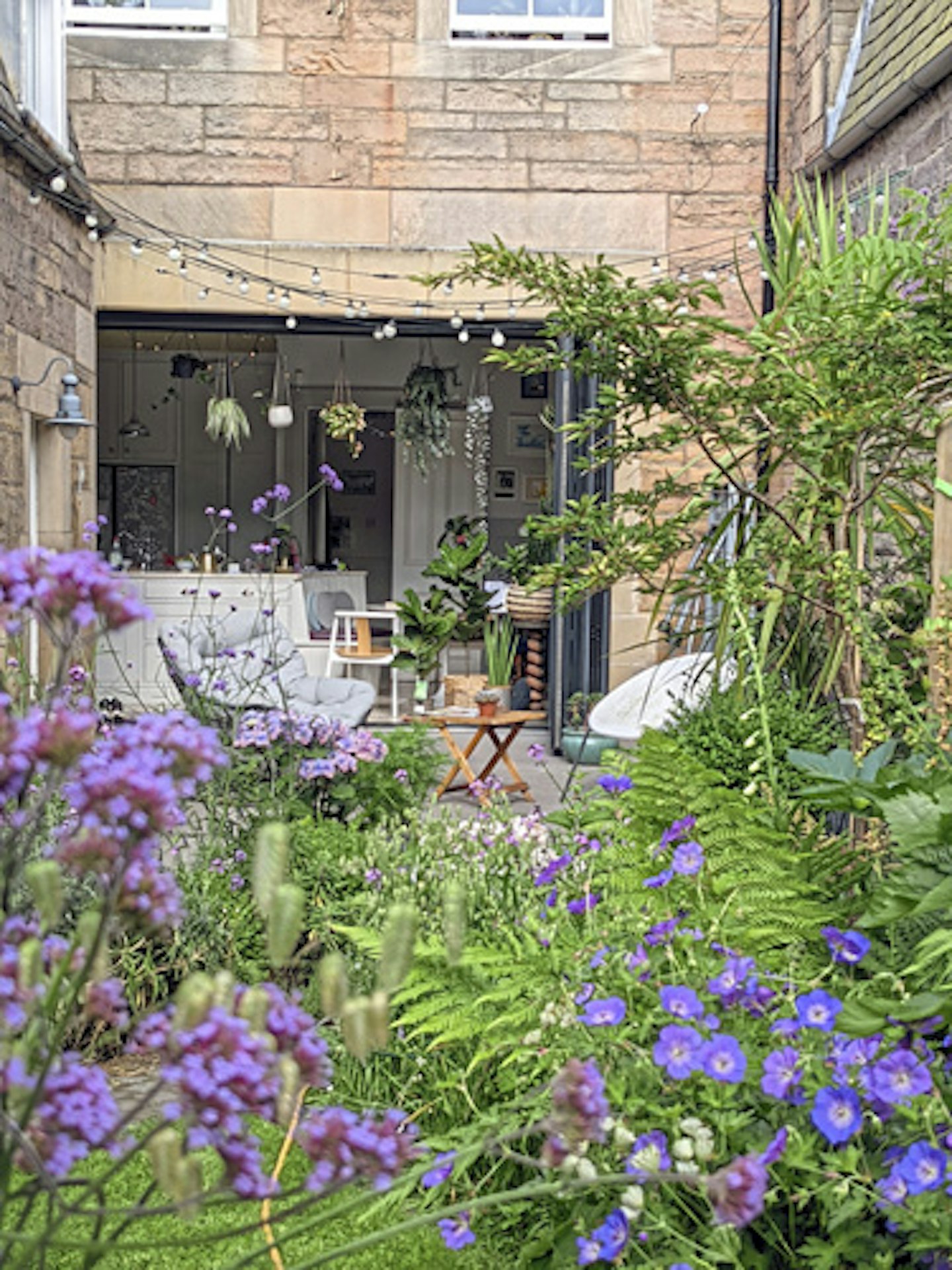 10 of 11
10 of 11Flinging open the bifolds to hear the new influx of birdlife is a daily joy, weather permitting!
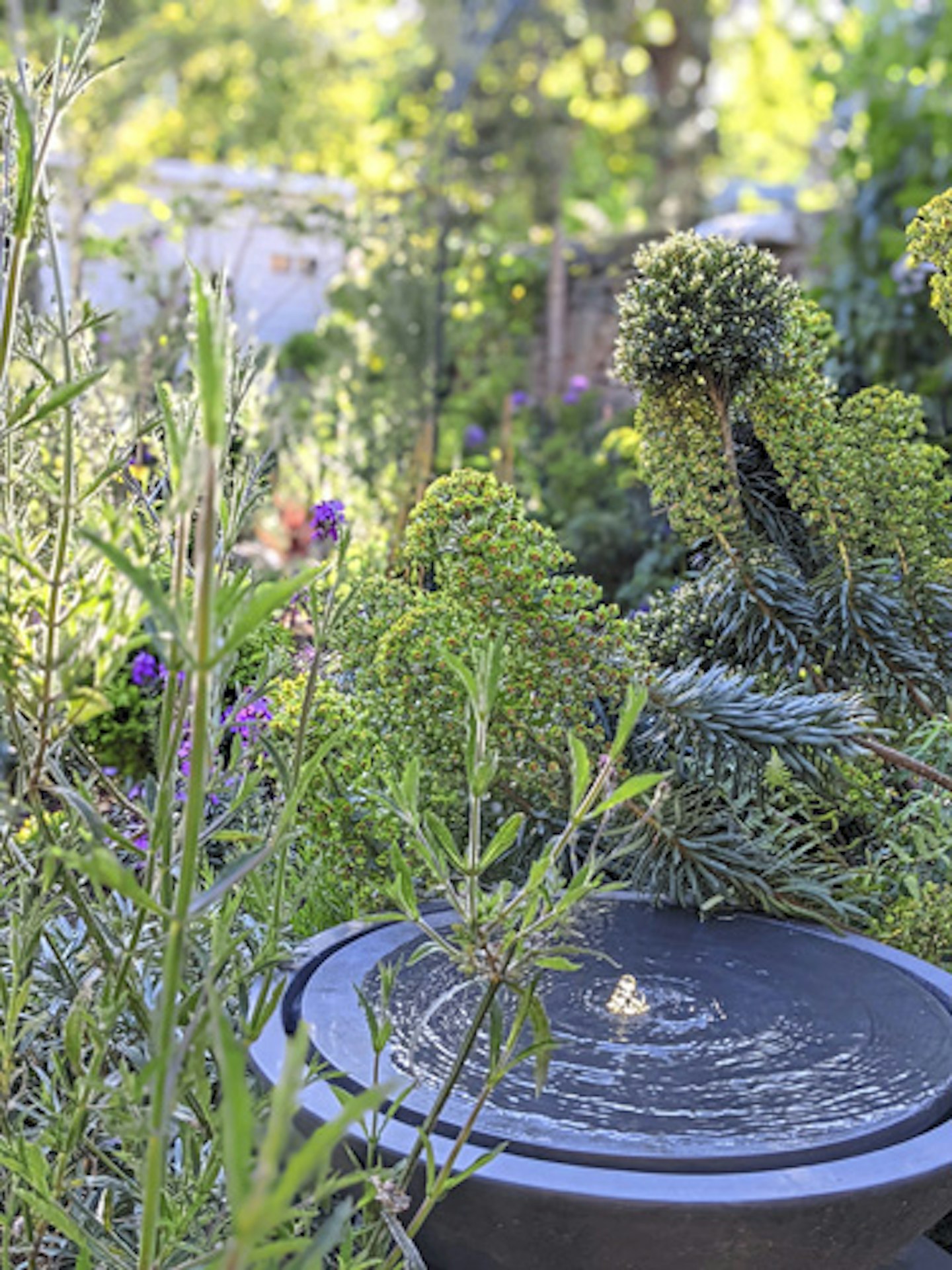 11 of 11
11 of 11Nectar-full euphorbia flourishes at the edge of the water feature.
Discover everything you need to know to make your outside space look fantastic, quickly and easily, with hundreds of simple ideas, designer tricks, affordable products and expert advice with a Modern Gardens Membership. Find out more about the benefits of being a Member now.
